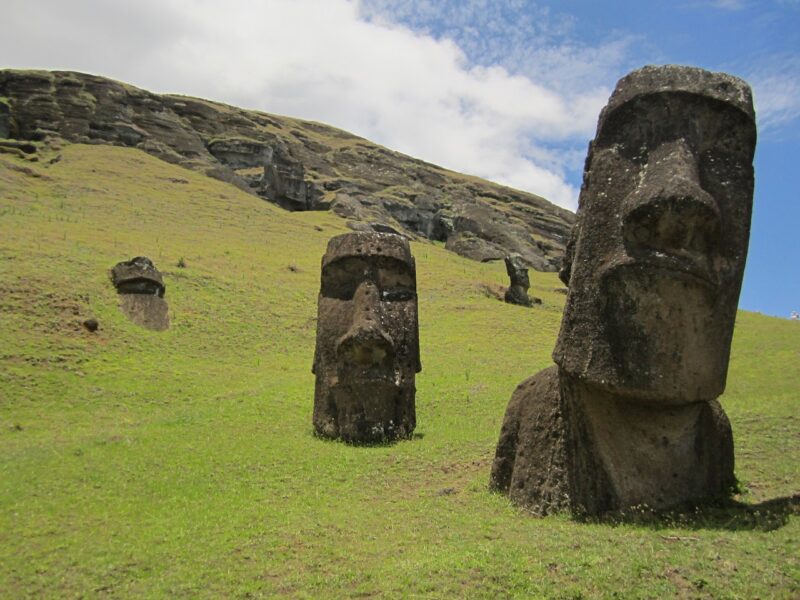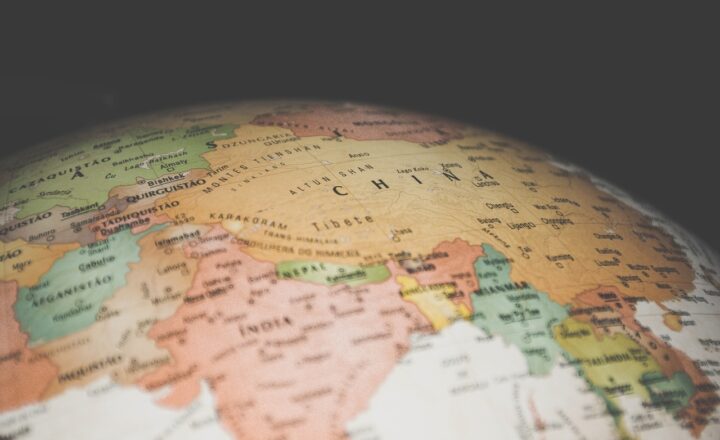The Mysterious Moai Statues of Easter Island and the Civilization Behind Them
November 15, 2024

Easter Island, or Rapa Nui as it is known by its indigenous people, is a remote island located in the southeastern Pacific Ocean, famous for its iconic moai statues. These colossal stone figures, crafted over a millennium ago, have mystified historians, archaeologists, and tourists alike. How were they created? Why were they built? In this article, we will delve into the history, culture, and secrets surrounding the moai statues and the civilization that birthed them.
1. The Enigmatic Moai Statues: An Overview
The moai statues are scattered across Easter Island, with around 900 of these monolithic figures adorning the landscape. Most of the statues stand between 10 to 13 feet tall and weigh around 14 tons, with the tallest moai measuring nearly 33 feet. What’s even more astonishing is that these statues were fashioned from volcanic tuff, primarily sourced from a quarry located at Rano Raraku, the island’s volcanic crater.
The craftsmanship of the moai is a testament to the advanced skills of the Rapa Nui people. Each statue represents an ancestor and is believed to be imbued with spiritual significance, serving as a symbol of power and authority. The moai face upward over the island’s villages, signifying their protective role over the people.
2. A Brief History of Easter Island and Its Inhabitants
Easter Island was settled by Polynesians around 1200 AD. These early settlers brought with them agricultural practices, skills in fishing, and a wealth of cultural traditions. It’s believed that the Polynesians also worshipped their ancestors, which played a crucial role in the construction of the moai statues.
The Rapa Nui civilization thrived for several centuries, developing a complex society with a deep connection to their environment and heritage. However, the island faced significant challenges, including deforestation, resource depletion, and social strife. These factors inevitably impacted the culture, leading to a decline in the population.
3. The Crafting of the Moai: Techniques and Tools
How did the Rapa Nui people manage to sculpt and transport these enormous statues? The craftsmanship involved in creating the moai has been the subject of much study. The statues were initially carved from volcanic rock using stone tools and wooden sledges. The unique chiseling techniques used include the use of wooden knocking sticks, which allowed the artisans to chisel away at the tuff.
Once completed, the moai were transported to designated sites known as ahu, which served as ceremonial platforms. The transportation process remains a hot topic in archaeological studies, with theories suggesting that the statues were either rolled on logs or walked upright using a sophisticated system of ropes and manpower.
4. The Significance of the Moai Statues
The moai statues were not mere sculptures; they were critical cultural symbols for the Rapa Nui people. Embedded with belief systems, these statues represented the lineage of chiefs and were considered to hold mana, or spiritual power. Each moai was essentially a guardian of the community, believed to bring blessings in the form of fertility and prosperity.
The positioning of the moai also highlights their cultural importance, with the majority facing inland towards the villages rather than the ocean, reinforcing the notion of protection for the inhabitants.
5. The Decline of the Moai Culture and Today’s Preservation Efforts
The tale of the Rapa Nui civilization is bittersweet. The construction of the moai and the societal commitment to ancestral worship ultimately led to environmental catastrophes. Deforestation, over-fishing, and resource mismanagement led to hardships that weakened the community. By the 19th century, European colonization and the slave trade further decimated the population, causing numerous traditional practices—including statue making—to come to a halt.
Today, efforts are ongoing to preserve the remaining moai and the unique culture of the Rapa Nui people. UNESCO designated Easter Island as a World Heritage site in 1995, underscoring the need for conservation. Collaborative efforts between the Rapa Nui people and various organizations aim to protect the island’s archaeological treasures, ensuring that future generations can appreciate this remarkable part of human history.
6. Conclusion: The Enduring Legacy of the Moai Statues
The mysterious moai statues of Easter Island continue to captivate and intrigue, serving as a testament to the ingenuity and cultural richness of the Rapa Nui civilization. They are not merely stone figures; they are the embodiment of ancestral reverence, social structure, and the complex relationship between humanity and its environment. As we continue to study and understand these majestic statues, we are reminded of the enduring legacy they represent—echoes of a civilization that once thrived against the odds.
If you ever find yourself in the vastness of the Pacific Ocean, make sure to add Easter Island to your bucket list. Walk among the giants, and perhaps you too will feel the pull of history and the whispers of the past emanating from the monumental moai statues.







